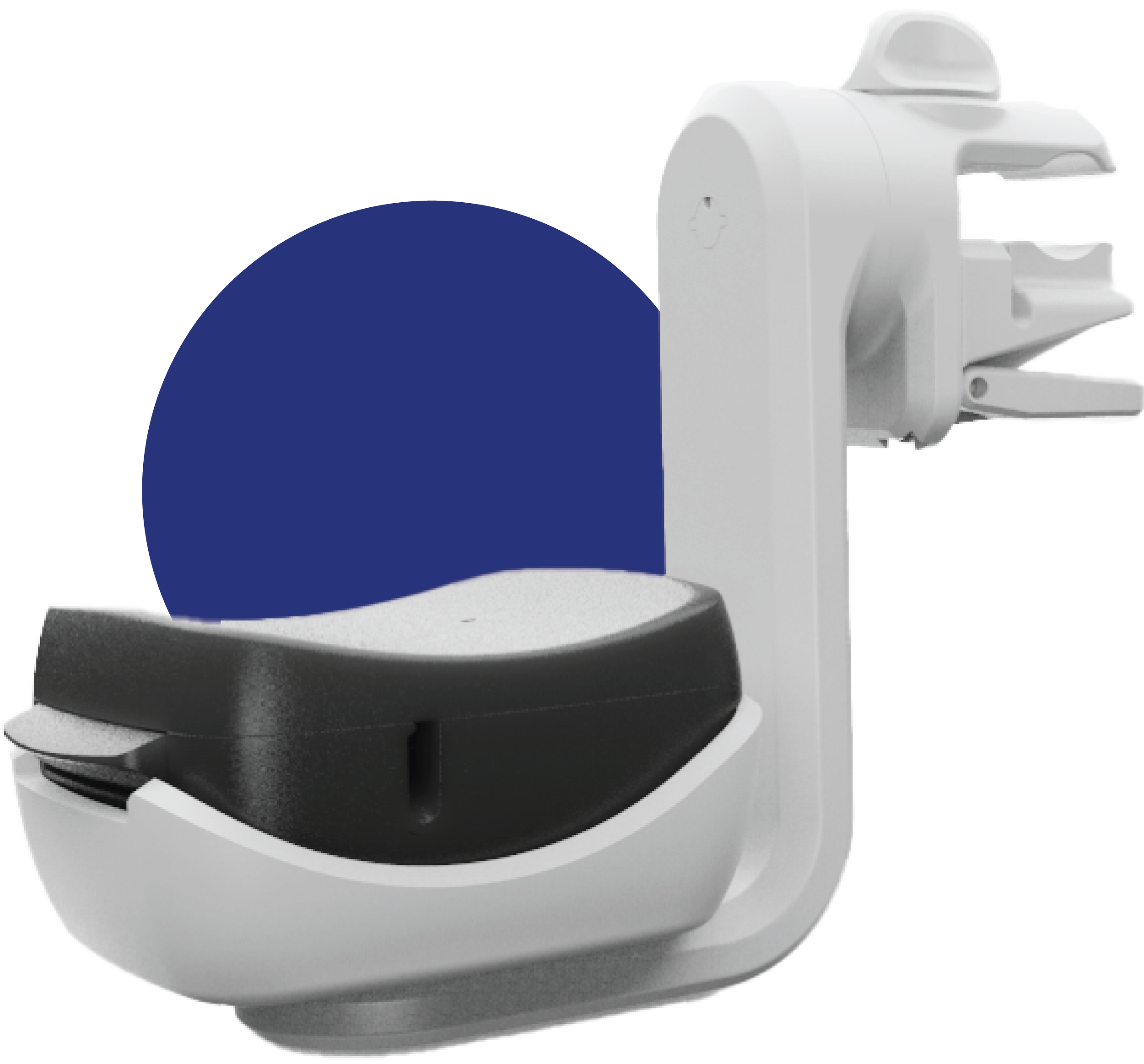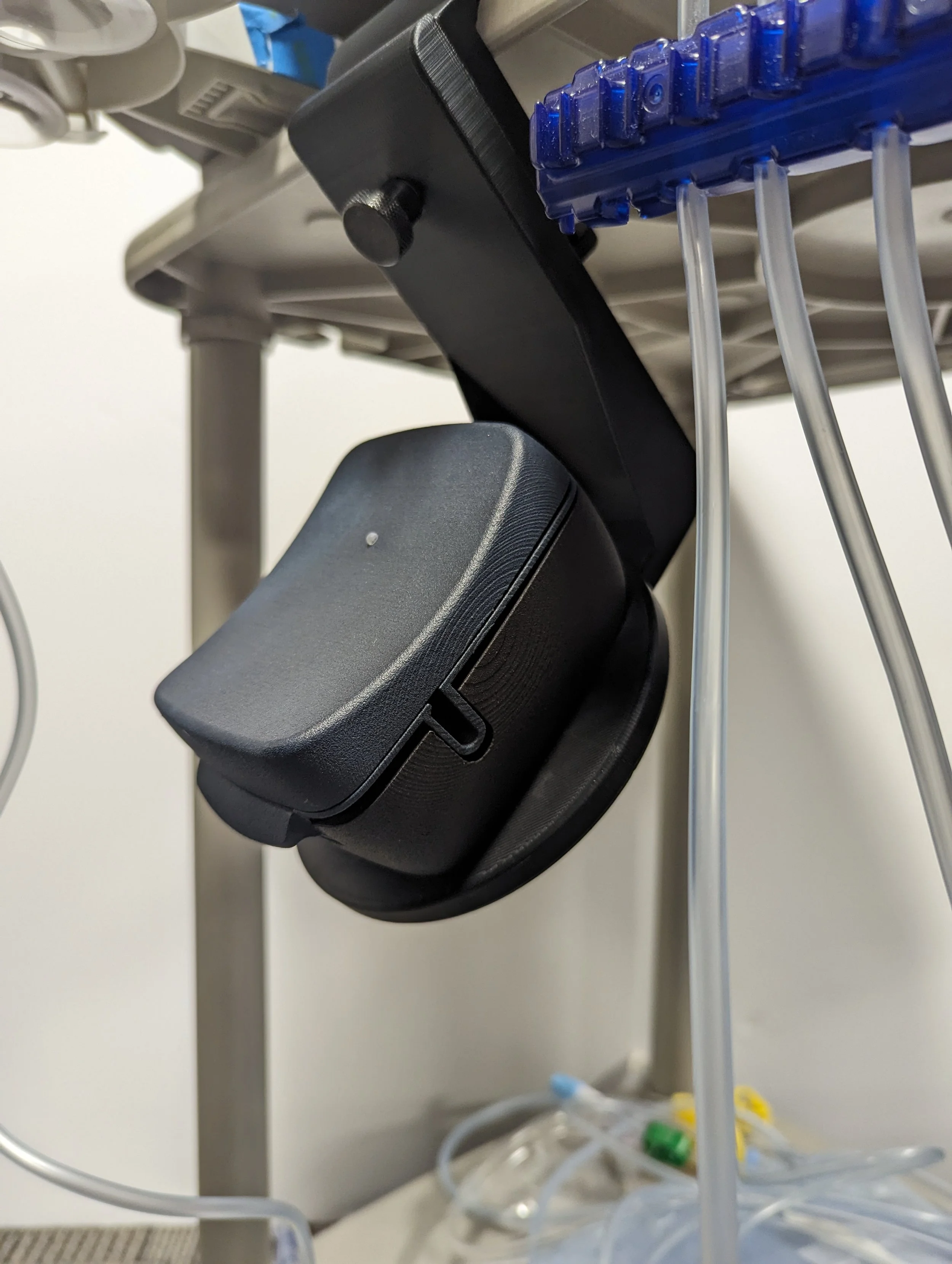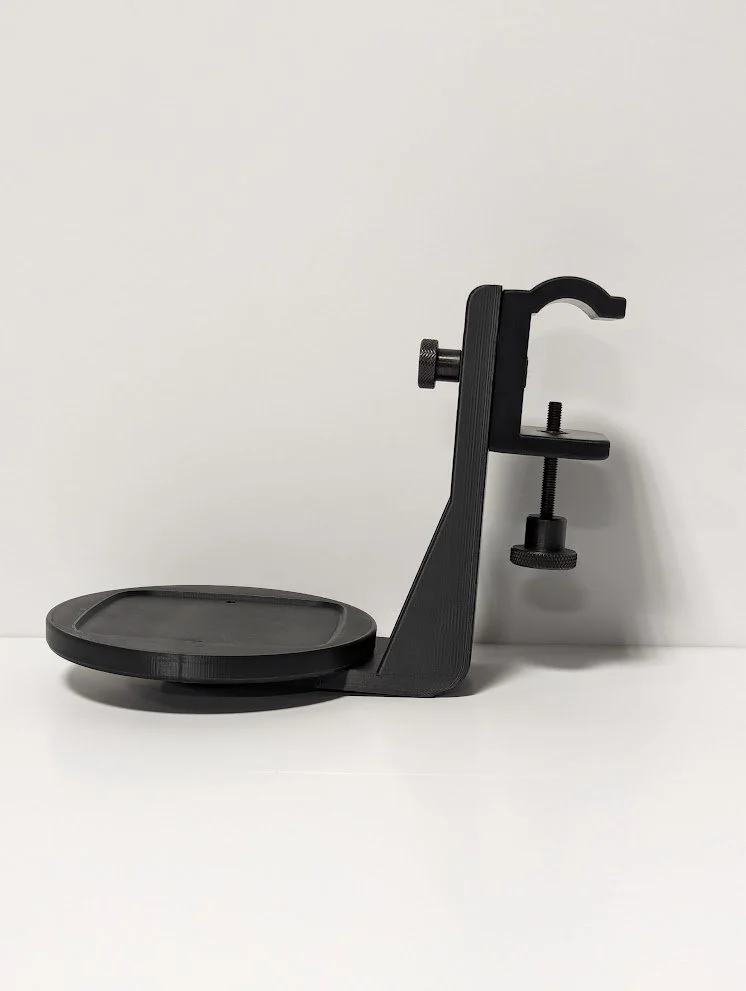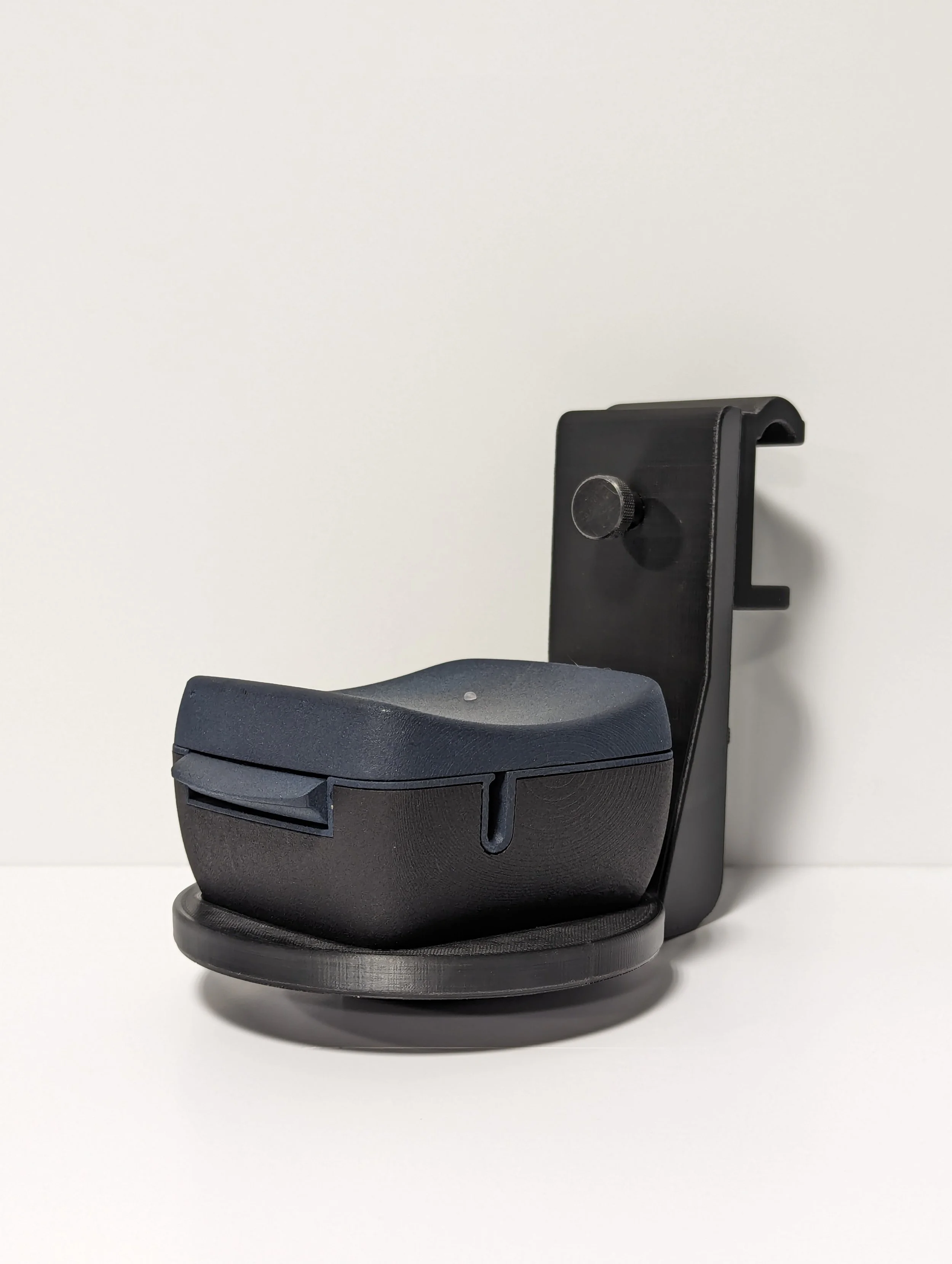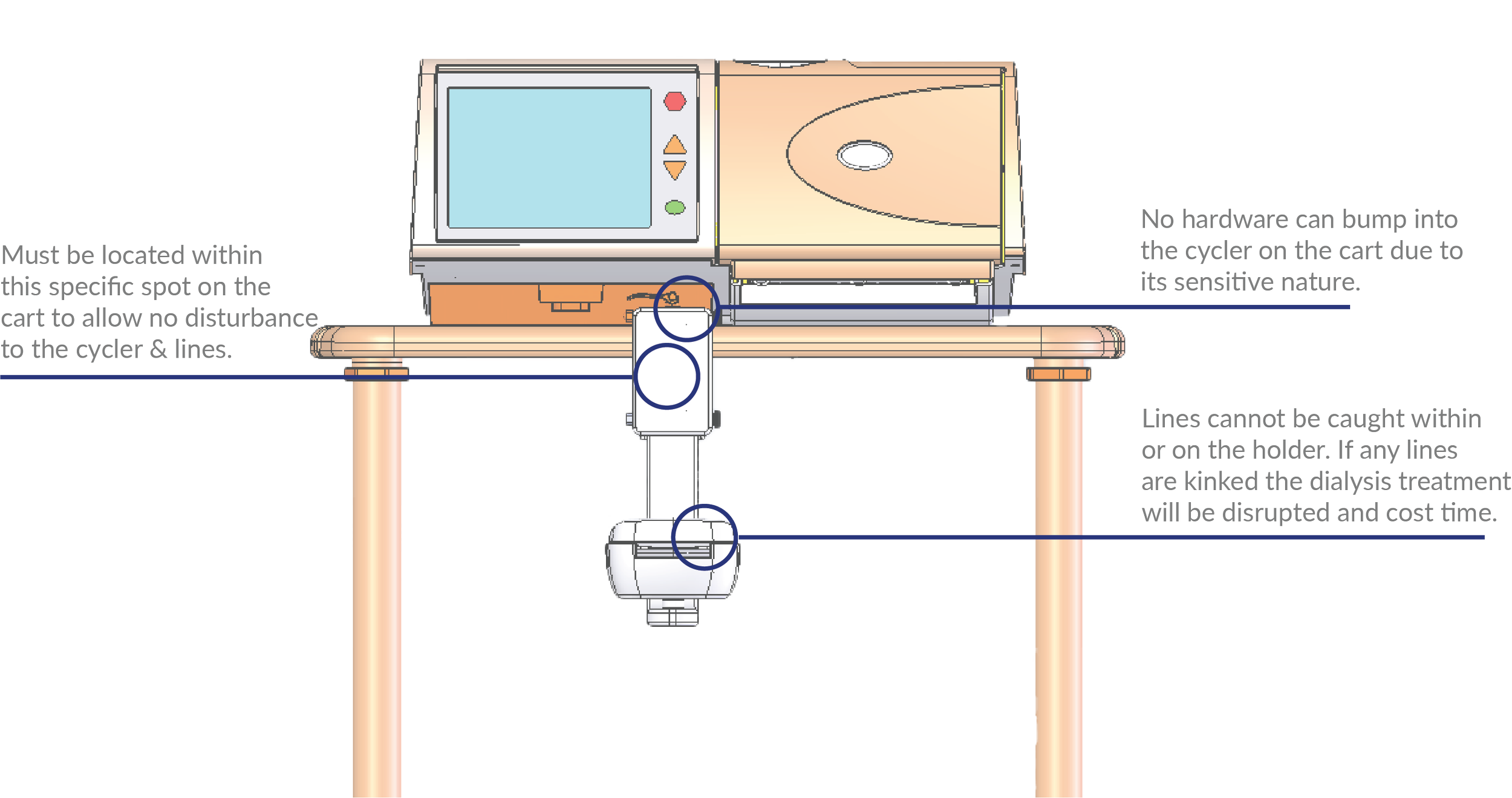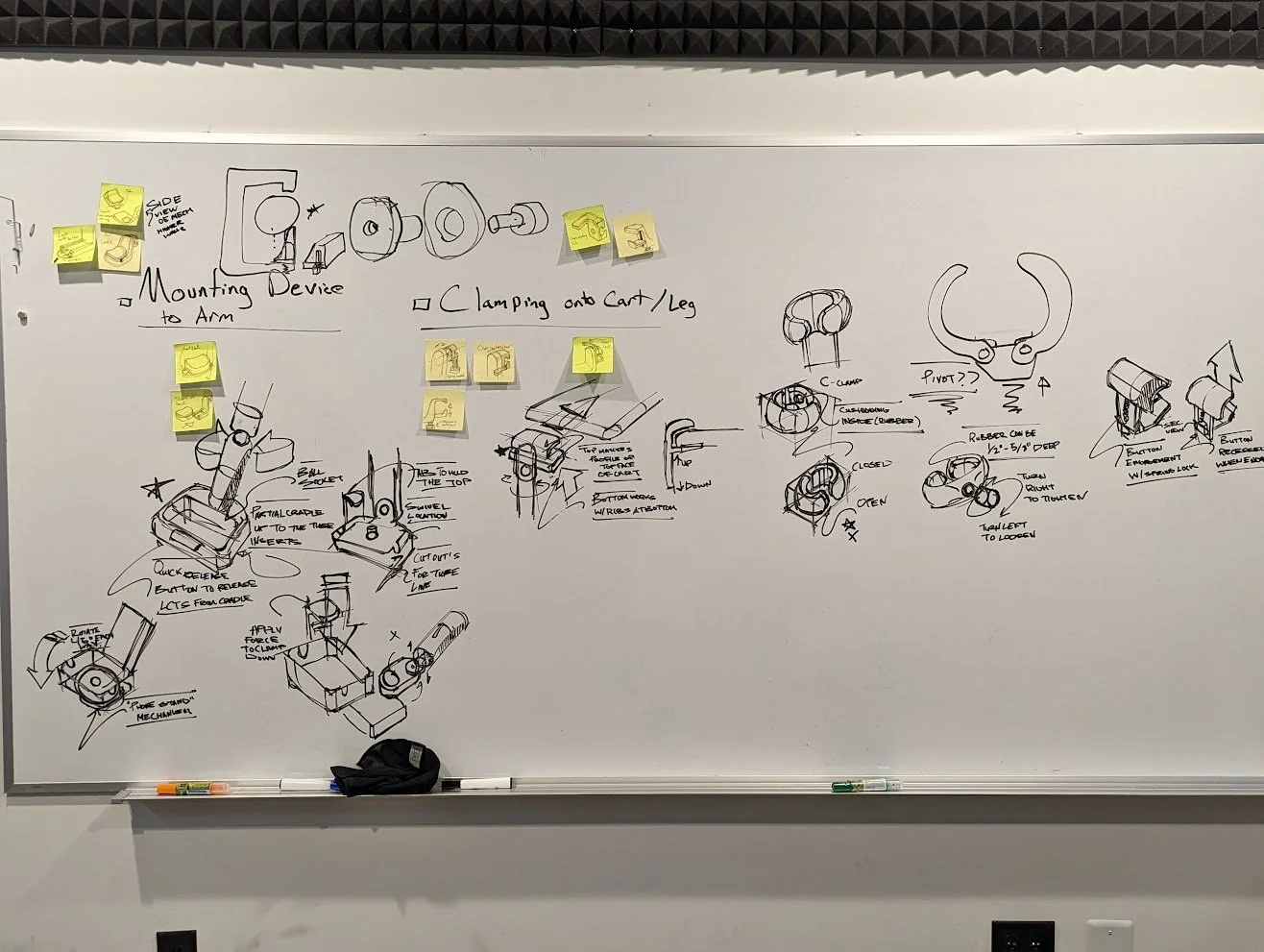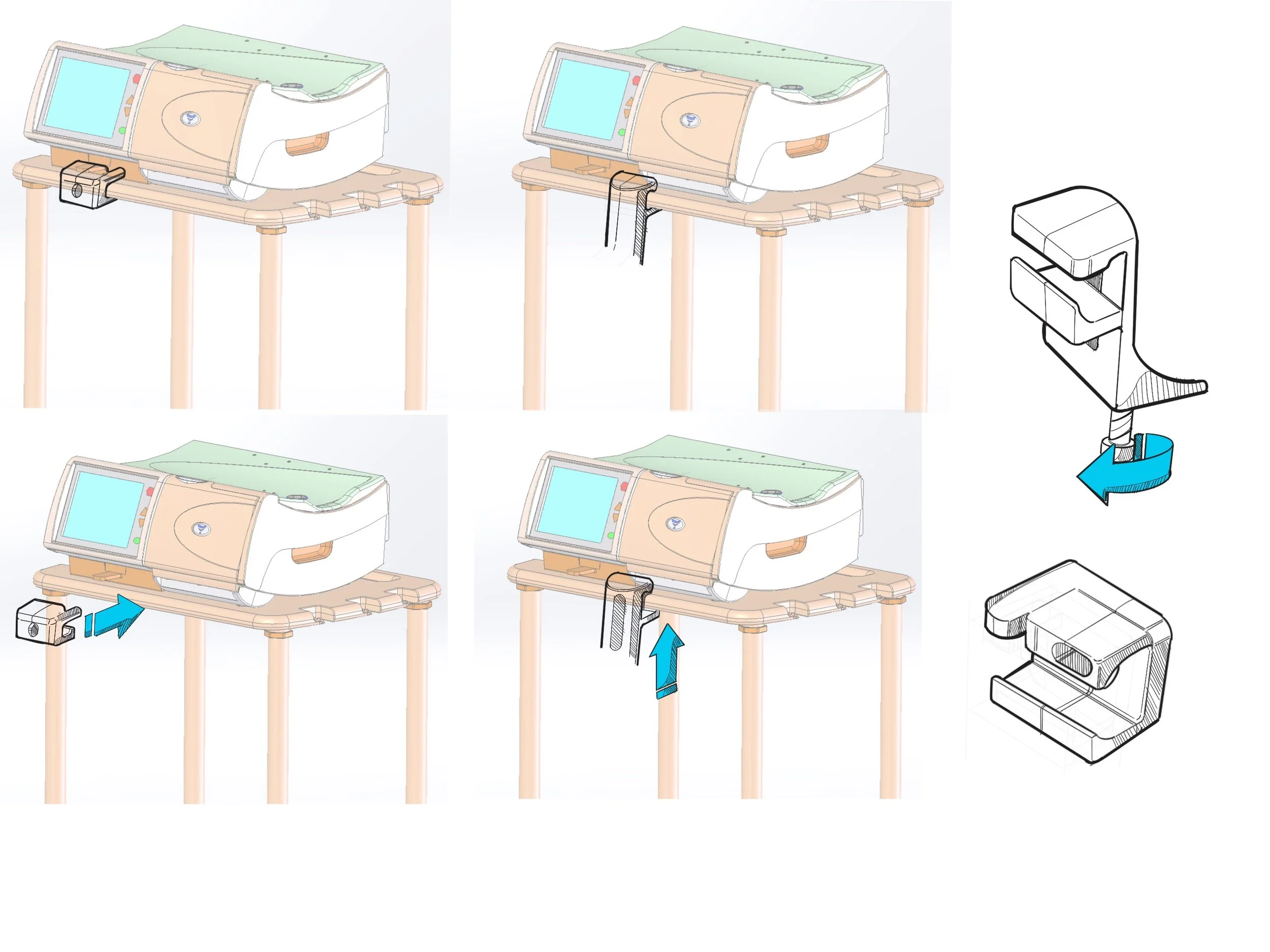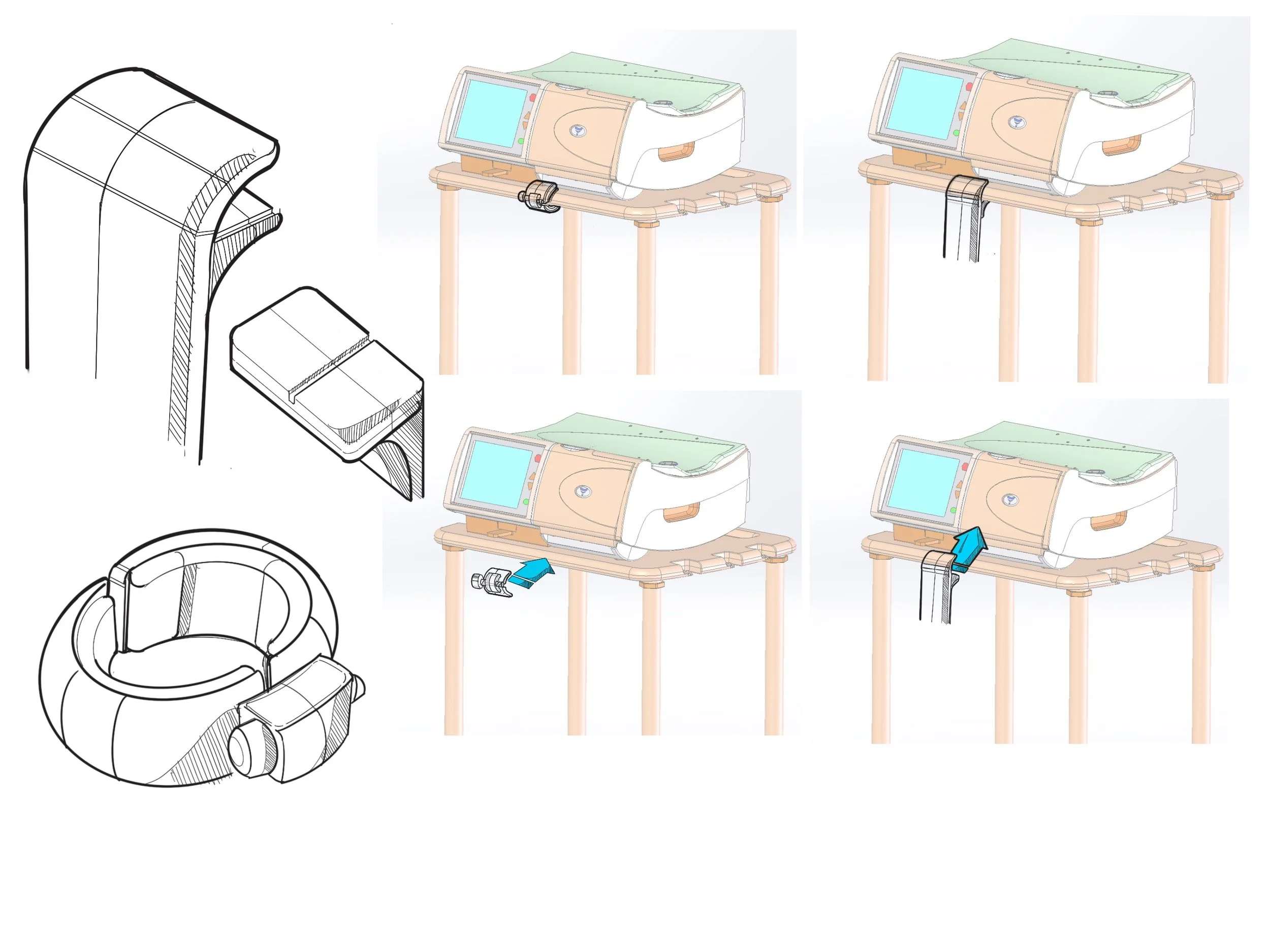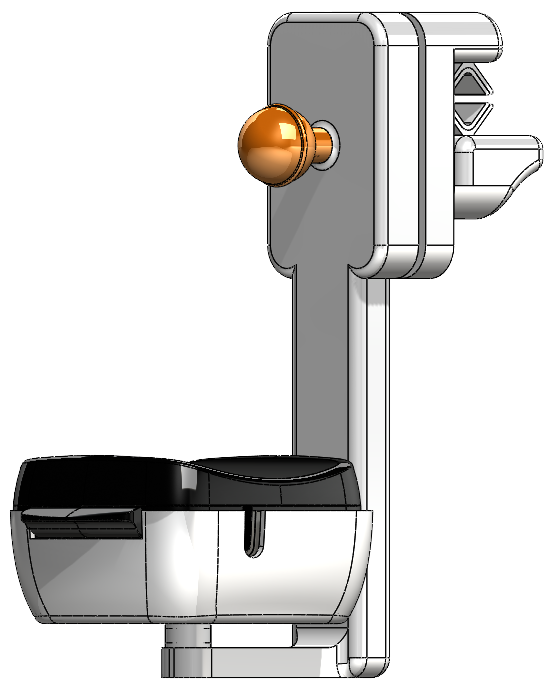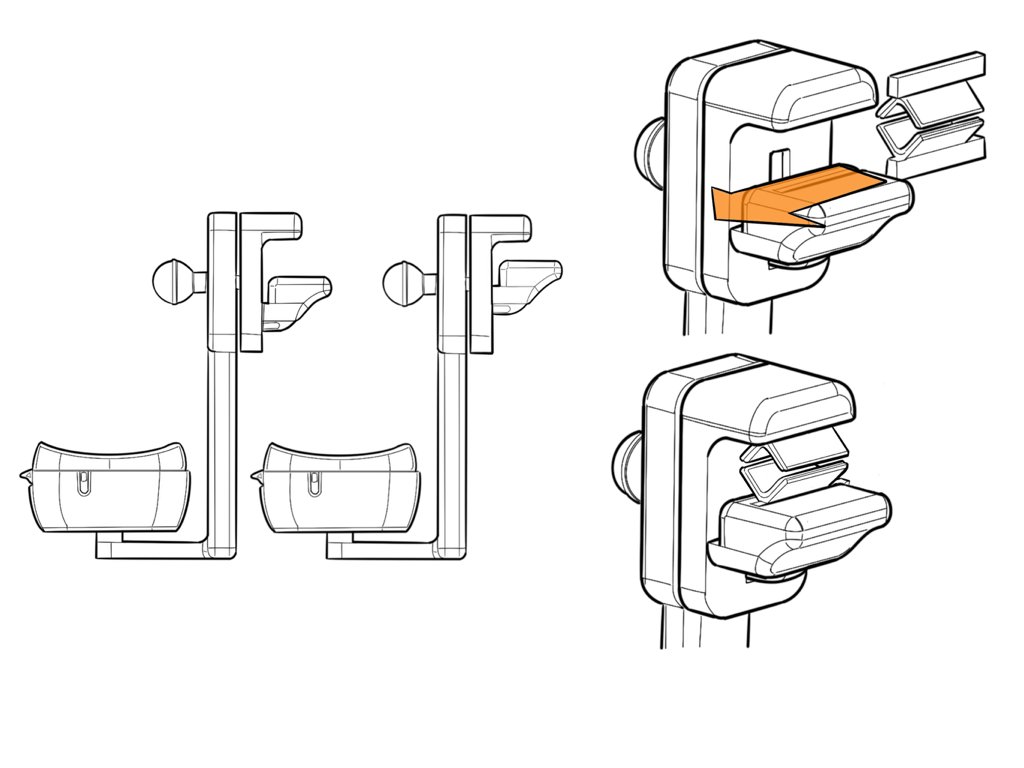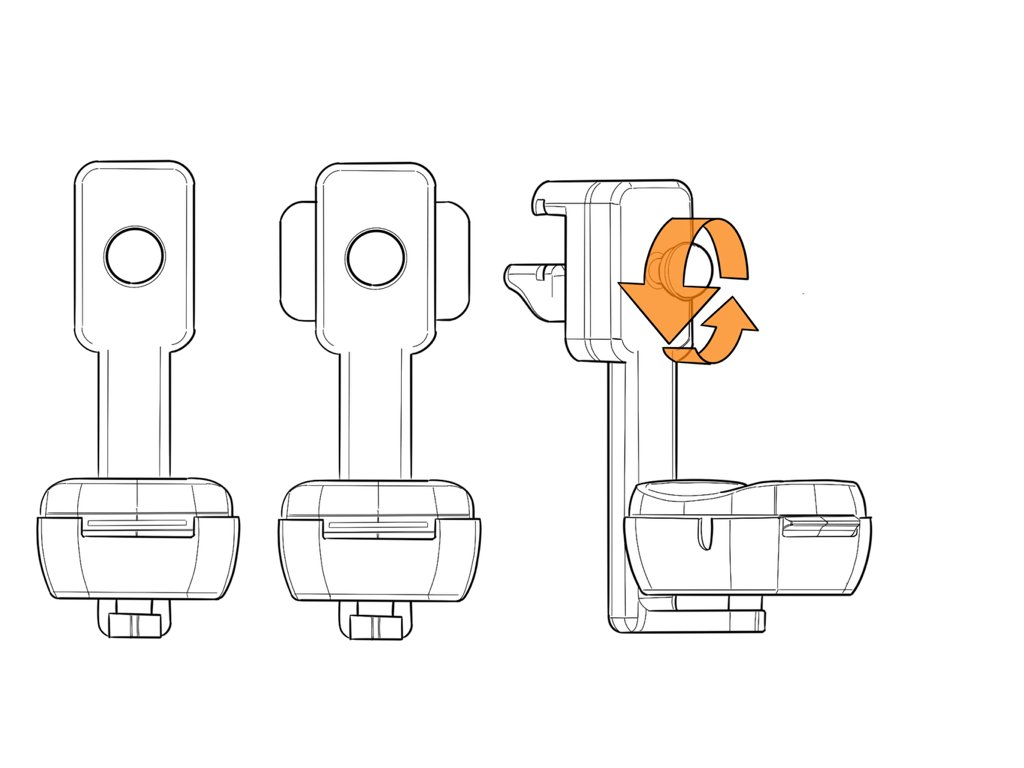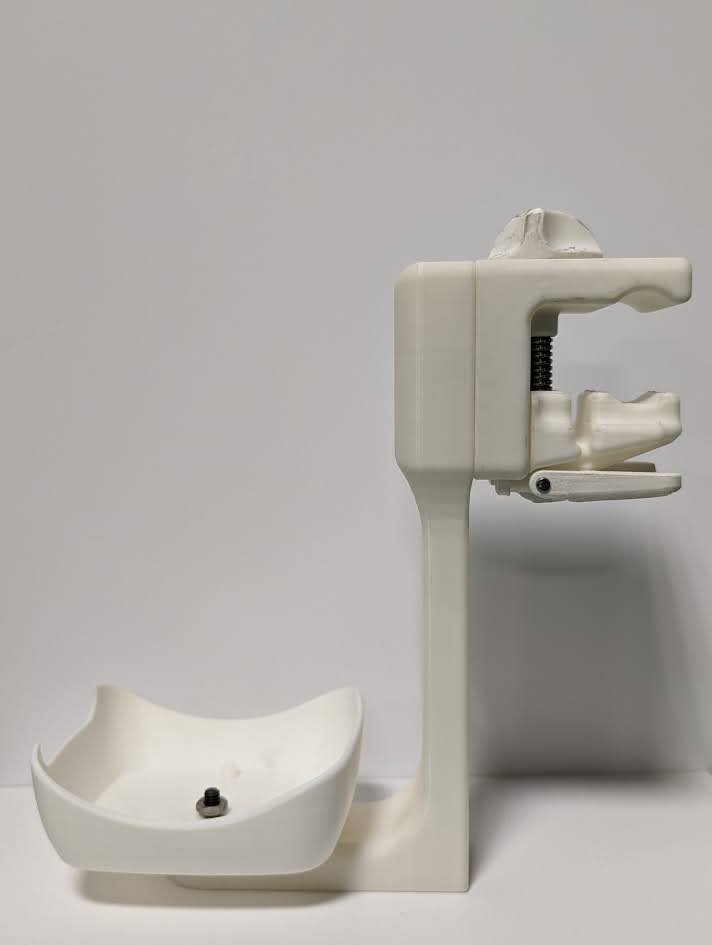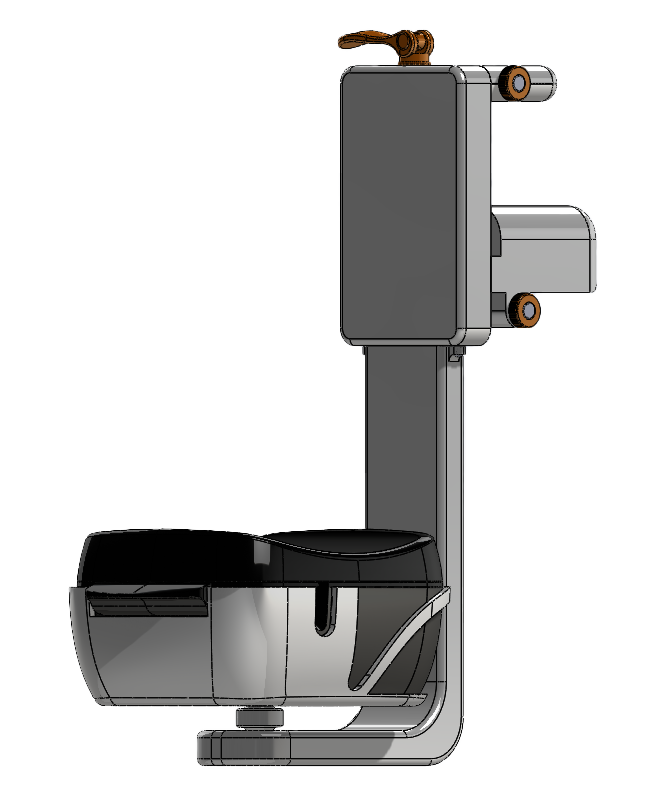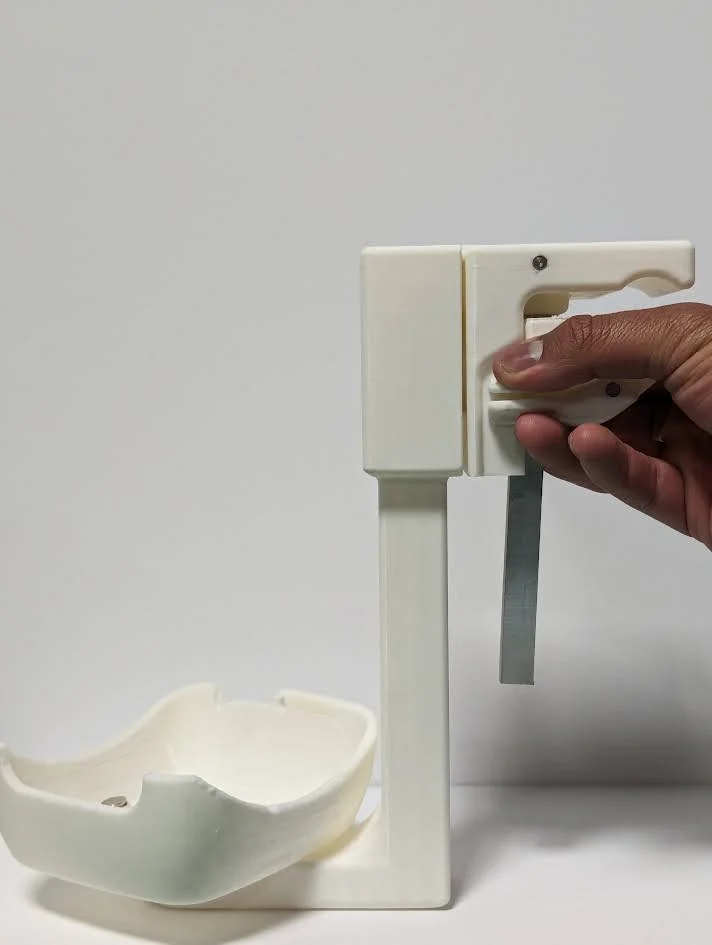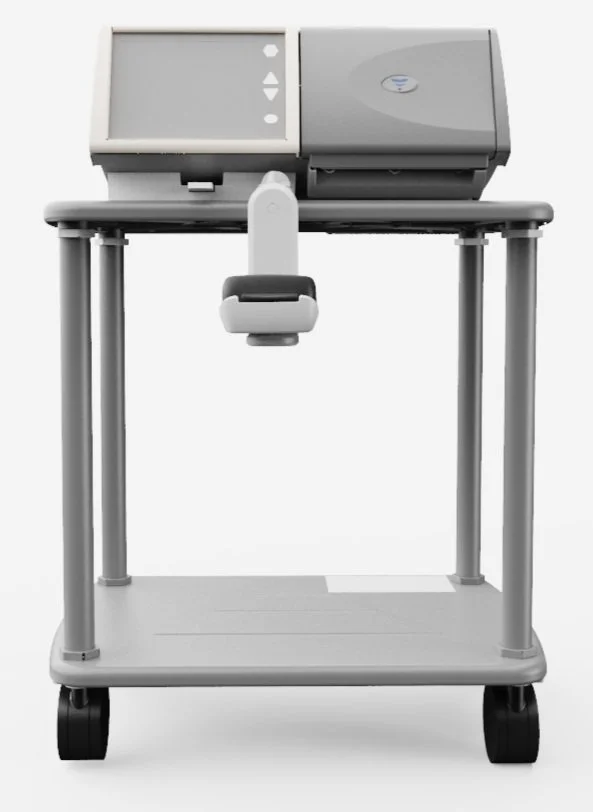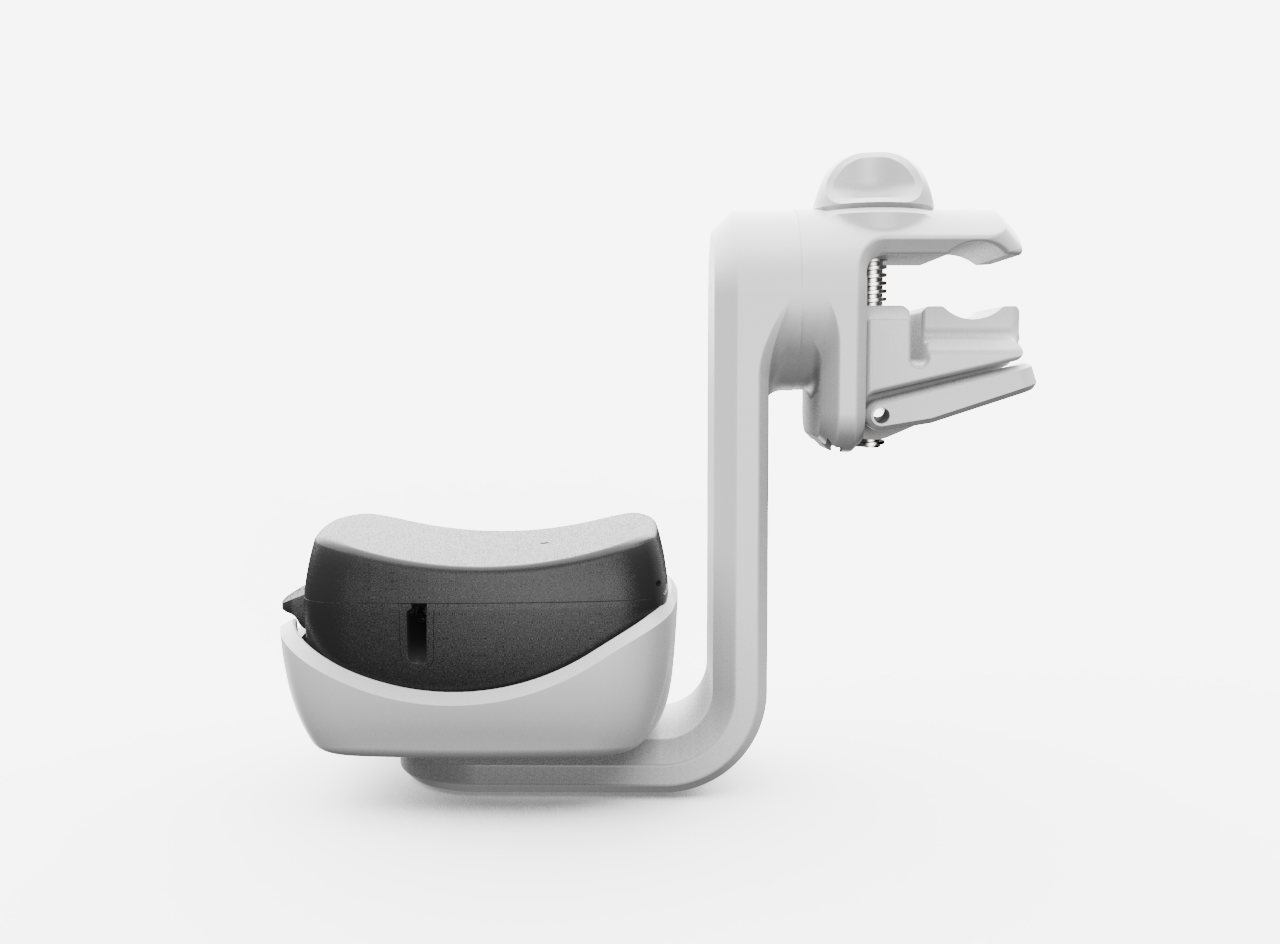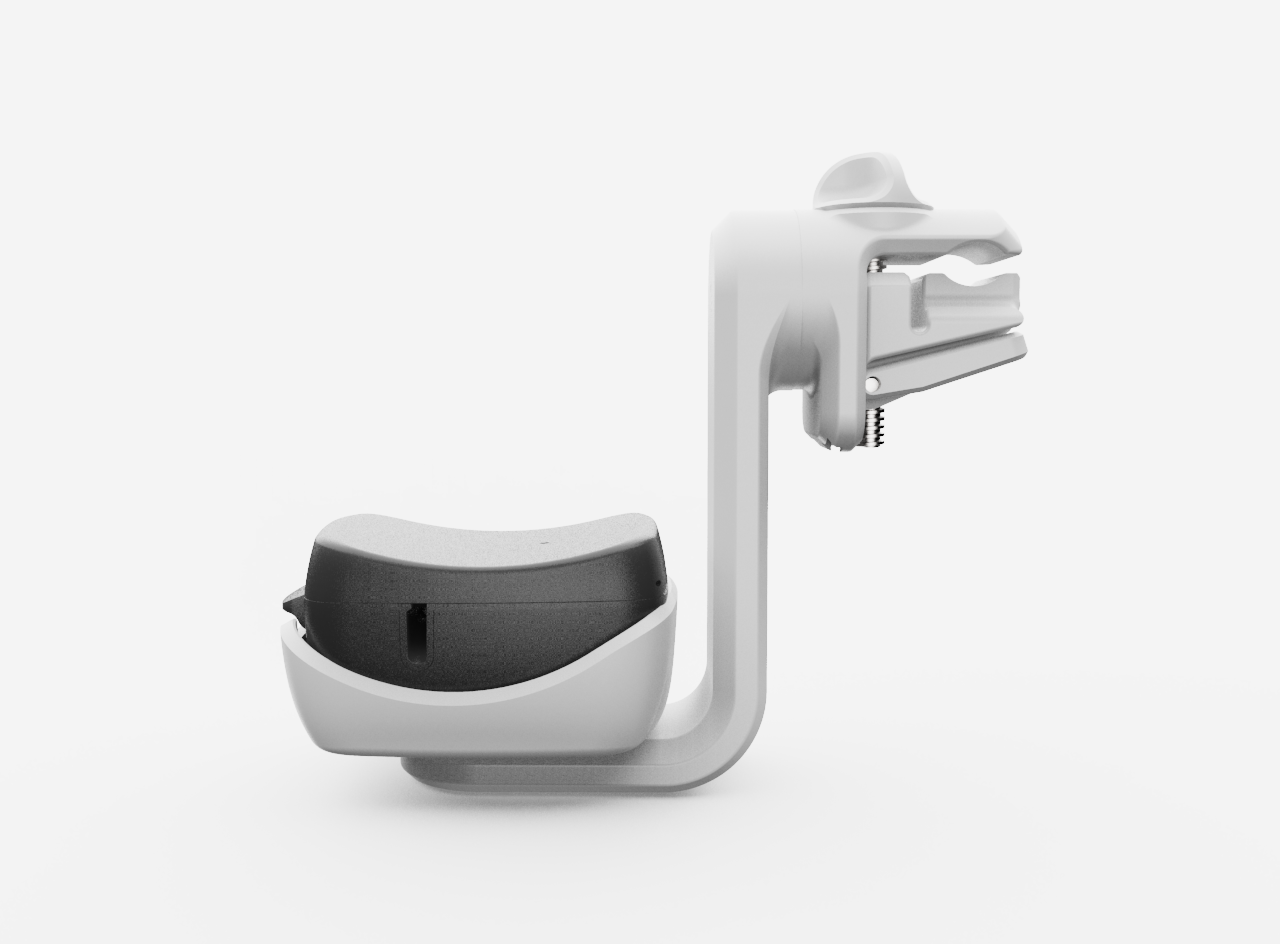Dialysis Cart Clamp:
A Secure & Ergonomic Solution
Entrusted with developing a secure and ergonomic clamp system for a dialysis cart, I collaborated with a Senior Designer to conceptualize a new medical device. Once the core device was defined, my focus shifted to the mechanical design of the clamp—ensuring stability, ease of use, and fail-proof functionality in critical medical scenarios.
Areas of Opportunity (Clients former Prototype)
Unstable Positioning—The original prototype failed to keep the medical product parallel to the ground, disrupting dialysis fluid flow and potentially leading to life-threatening complications.
Difficult Usability—The clamp required constant manual force to stay secured, making it cumbersome for medical staff to attach or remove from the dialysis cart or IV pole.
Lack of Security—The holder’s swiveling issue created a risk of the device falling if the patient moved, potentially ripping the dialysis line, leading to a dangerous medical emergency.
Product Demands
Initial Brainstorm
Building upon the limitations of the current prototype, I explored various clamping mechanisms that would:
✔ Ensure a secure & stable grip on both the cart and IV pole
✔ Eliminate the need for manual force when securing the clamp
✔ Prevent accidental dislodging, even if the cart is in motion
Concept A Holder
Featured a knob with a ¼"-20 threaded steel section, allowing the back portion to pivot 90° for a secure grip on the IV pole and cart.
Included an IV pole clamp attachment, which was later discarded to simplify the design.
Integrated magnets within the cradle to hold the medical product securely during dialysis.
However, the pivot post was positioned too high, creating a potential pinch/tangle point for dialysis lines.
Concept A (Prototype)
This iteration successfully achieved the intended functionality:
Used an Acme-threaded screw, enabling the rear clamp to attach effortlessly to the cart or IV pole while allowing for precise micro-adjustments via the top knob.
The cradle was designed to seamlessly align with the holder’s base, ensuring stability while keeping the hardware unobtrusive.
User interaction was explored through sketches, detailing how the product would be engaged and adjusted.
Concept B
Replaced the knob with a handle-driven clamp for easier user operation.
Introduced four contact points to enhance stability on both the IV pole and cart.
Maintained the pivoting mechanism, but, similar to Concept A, the post was too elevated, posing a risk of pinching or tangling dialysis lines.
Concept B (Prototype)
This version refined the clamping approach:
The clamp mechanism was redesigned, allowing it to slide along a steel bar to adjust to the desired position.
Reduced user touchpoints from three to two, streamlining the interaction and simplifying the locking process.
Sketches helped visualize how users would interact with the holder for a more intuitive experience.
Final Product
After rigorous testing and evaluation, Concept A was selected as the final design due to its:
Ease of use – The refined mechanism required minimal effort to secure the holder in place.
Simplified hardware – Eliminating unnecessary components reduced complexity while improving reliability.
Uninterrupted dialysis line freedom – The design ensured that tubing and cables remained untangled and unobstructed during use.
